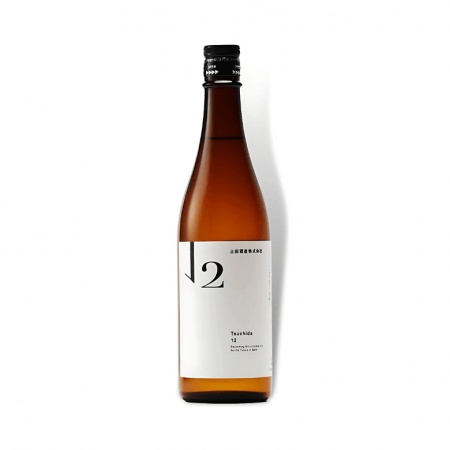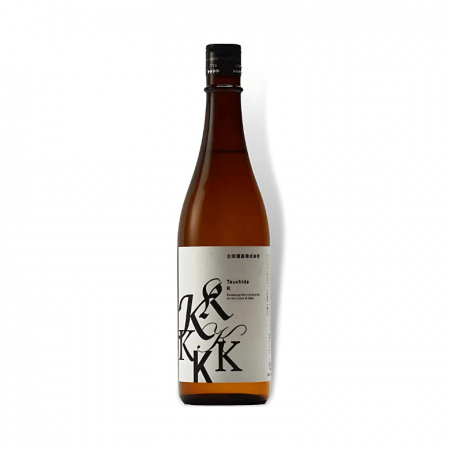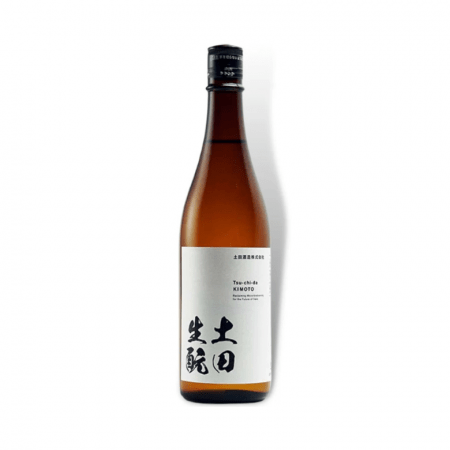Showing all 6 results
-

Tsuchida 99
$72.00 exc. GSTRead moreTsuchida 99, released every year on September 9th (the ‘Day of 99’), is well-known by now. It’s a sake that challenges the limits of Japanese sake, with a koji ratio (the proportion of koji rice used in the ingredients) at the extreme limit of 99%.
This year, in addition to the usual Tsuchida 99, we are also introducing a super unconventional and extremely limited edition of 99. Enjoying both will allow you to appreciate the depth of koji even more.
The ‘Koji-kin’ (koji mold), Japan’s national mold, is indeed the most important in sake brewing.
Koji-kin is a representative mold of Japan and has been recognized as the national mold. It is indispensable in creating traditional Japanese fermented foods like miso, soy sauce, vinegar, mirin, and sake. It’s very familiar to the Japanese.
In sake brewing, there’s a saying, ‘First koji, second moto (sake mother), third moromi (mash).’ It emphasizes that koji is the most important aspect of brewing. Of course, every step is important, but koji significantly affects the subsequent processes of the sake mother and fermentation, and it is a crucial step in creating the taste and aroma of sake.
Using koji, Japan’s national mold and the most important element in sake brewing, to its limit in sake is what makes 99 special. The amount of koji rice dramatically changes the flavor, expanding the possibilities of Japanese sake. The standard ratio is 20%; 99 is 99%. It’s not 100 because it’s sake.
The koji ratio refers to the proportion of koji rice used in the ingredients. Typically, a 20% koji ratio is standard, meaning 20% koji rice and 80% white rice are used in brewing. Our product with a 99% koji ratio is made with 99% koji rice and 1% white rice.
Why not 100%? Because the Liquor Tax Law defines Japanese sake as a product made by fermenting ‘rice, rice koji, and water,’ and then filtering it. In other words, we can’t call it sake and wouldn’t be able to brew it under a sake production license without using at least a little white rice.
We settled on 99% under the Liquor Tax Law, but the number 99 has a nice ring to it, and now I think 99% was just right
-

Tsuchida Bodaimoto 99
$89.00 exc. GSTRead moreIn
addition to our standard Tsuchida 99, this year we are introducing another special 99.This is the Research Brewing Data.30 “Bodaimoto 99.”For several years now, Tsuchida Sake Brewery has been brewing with Bodaimoto, but this year, we created 99 using Bodaimoto. This might be the first attempt in the world.Bodaimoto involves more microorganisms compared to the usual Kimoto. What kind of sake did it turn out to be?We have the rich 99 and the slightly lighter Bodaimoto 99. This will definitely divide preferences. Brewmaster Hoshino, you’ve done it again.You’re probably familiar with the taste of 99. Rich and honey-like. Sweetness and umami MAX. A sake that lets you feel the power of koji. If you think it’s just normal sake and try it, you’ll be surprised.And then there’s this year’s limited edition Bodaimoto 99. We differentiated it from 99, aiming for a lighter taste. Compared to 99, it’s very light. However, perhaps due to the Bodaimoto, it has a very complex umami. This is good. Very well balanced. Brewmaster Hoshino, you’ve done it again. Bodaimoto 99 sounds incredible, but to turn it into this kind of sake… you’ve done it again.I want to place Tsuchida 99 720ml and Bodaimoto 99 720ml side by side and enjoy them. Rich dishes go best with 99, as alwaysDishes with strong flavors are perfect for 99. -

Tsuchida Craft 12
$69.00 exc. GSTRead moreThis soft and refreshing sake has lower alcohol content of 12%. White koji provides surprisingly bright lime and yuzu zesty acidirty with cream and pears. Perfect sake to non-Japanese starter dishes such as fish and chips or Thai fresh summer rolls.
-

Tsuchida Happy Hill
$83.00 exc. GSTRead moreFrom the Toji:
“Have you ever heard of sake made from rice grown in fields, not rice paddies?
Rice is made in rice paddies.
Everyone probably thinks so, and I, of course, never thought of growing rice in fields instead of paddy fields.“Happy Hill” is the name of the rice.
Happy Hill is a common name, and the official variety is Fukushima No. 2. It is a variety that was first cultivated and registered by Masanobu Fukuoka, the founder of natural farming, and it seems that Fuku = happy and Oka = hill.Upland rice is rarely heard of in Japan, but it seems that there are surprisingly many regions around the world where upland rice is used for rice cultivation. Even in Japan, historically it is older than paddy rice, and currently, in Tochigi and Ibaraki prefectures, mainly mochi rice is grown with upland rice. Sake that changes your way of thinking”
There are three key points about the rice:
1. Low polishing so the rice does not break.
2. Dissolve with strong koji.
3. Additive-free kimotoThrough sake brewing at Happy Hill, the idea that any type of rice can be used as the raw material for sake has deepened.
Table rice, medium-long grain rice, upland rice…
By using a variety of rice to make sake, the taste of the sake will become more diverse and the individuality of the region and the brewery will be more highly expressed. It is a strong sake with a strong umami flavor. It is strong and delicious, but the aftertaste is surprisingly light and easy to drink.Please try it at room temperature to warm. Please enjoy it with meat dishes!
-

Tsuchida K
$84.00 exc. GSTRead moreTsuchida K is crafted using a distinctive brewing method known as “Kijoshu,” where sake is used instead of water during the final stage of the three-step brewing process. This technique enhances the sake’s sweetness and complexity, making it an ideal pairing with desserts.
The brewery also employs a high koji ratio, which contributes to the sake’s rich and full-bodied flavor. Koji, a mold used in the fermentation process, is crucial for breaking down the starches in rice into sugars, which are then converted into alcohol by yeast. The high koji ratio in Tsuchida K results in a more pronounced umami flavor, a hallmark of Tsuchida’s sake.
About the Brewery:
A Legacy of Tradition and Innovation Founded in 1907, Tsuchida Sake Brewery is situated in Kawaba Village, a small community in Gunma Prefecture. The brewery is currently managed by the sixth generation of the Tsuchida family, who have maintained the traditional methods of sake production while also embracing innovative techniques.The brewery is known for its commitment to the kimoto method, a traditional and labor-intensive brewing process that utilizes natural microorganisms found in the air. This method, which dates back to the Edo period (1603-1868), is rare among modern sake breweries due to its complexity and the time required for fermentation.
-

Tsuchida Kimoto
$84.00 exc. GSTRead moreTsuchida Kimoto has a relatively high milling rate of 60% at Tsuchida Brewery. (Though this is not generally considered highly polished rice.) In contrast to Shin-Tsuchida, which has a milling rate of 90% and is made without added yeast, Tsuchida Kimoto, though made in the same brewery using the same method, has a completely different character.
Shin-Tsuchida is characterized by the rich umami of rice and the complexity brought about by wild yeast. On the other hand, Tsuchida Kimoto, brewed with Kyokai No. 701 yeast, is known for its flavorful yet light and clear aftertaste.
The taste is thoroughly suitable as a companion to meals. The natural lactic acid bacteria bring out a perfect balance of sourness and umami, and its clear aftertaste enhances the flavor of the food. It goes well with all kinds of dishes – Japanese or Western, meat, fish, or vegetables – and changes its character whether served cold, at room temperature, or warmed.
